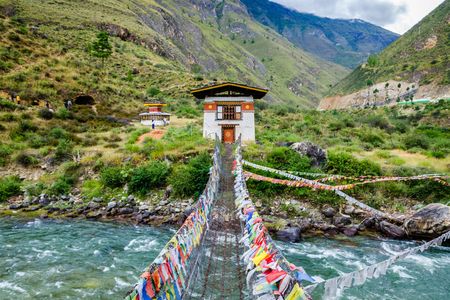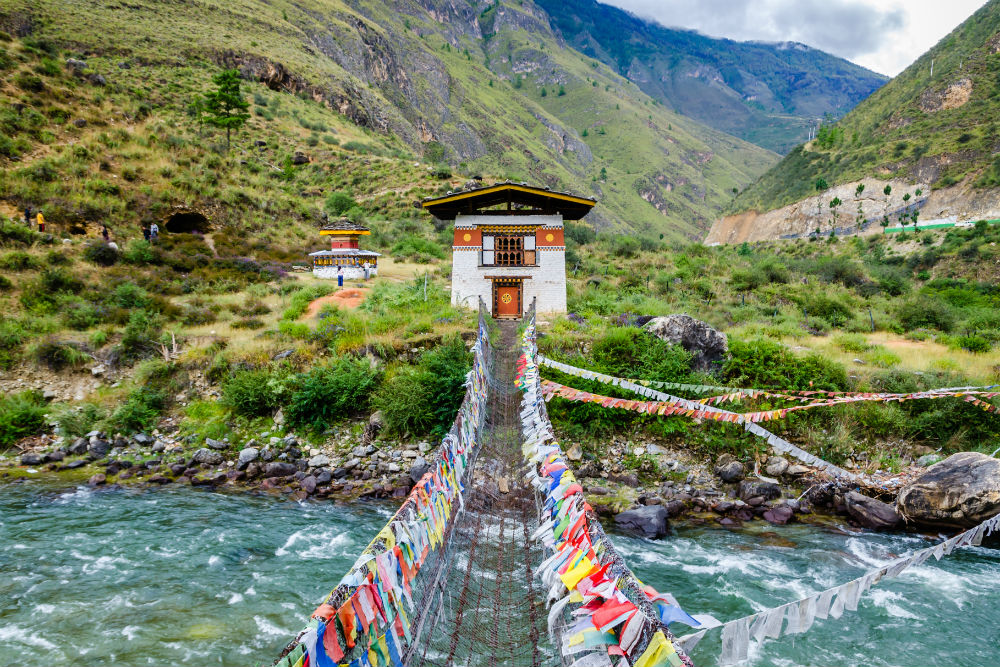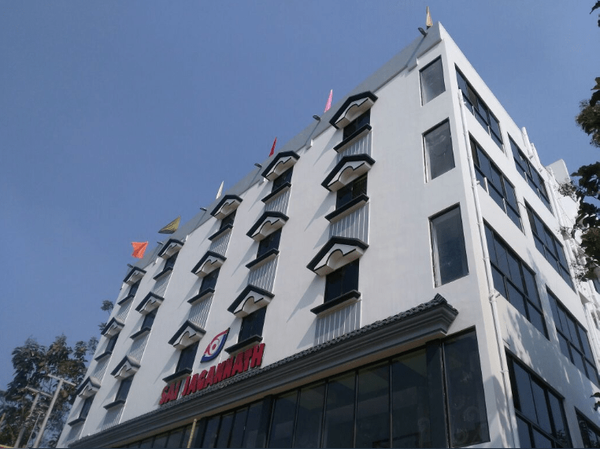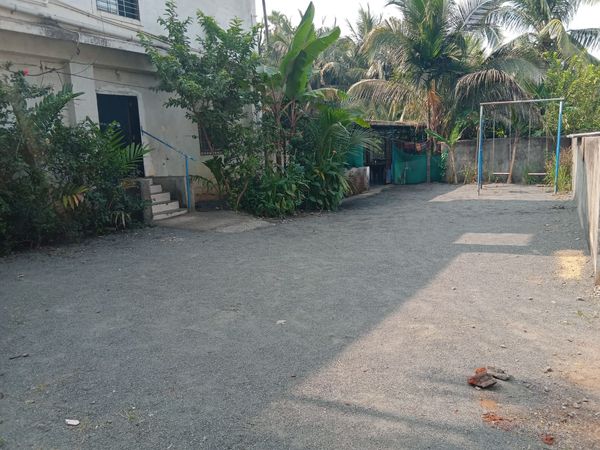Perfect Time of Year to Visit Bhutan: A Seasonal Guide to the Land of Happiness
 Prashant Chauhan
04 Aug, 2025
9 mins read
64
Prashant Chauhan
04 Aug, 2025
9 mins read
64


Nestled in the eastern Himalayas, Bhutan is a mystical kingdom renowned for its commitment to Gross National Happiness, stunning natural beauty, and rich cultural heritage. From the majestic dzongs and vibrant Tsechus (festivals) to the tranquil monasteries like the famous Tiger’s Nest Monastery, Bhutan offers a magical experience that is both peaceful and awe-inspiring. When planning a trip to this Himalayan paradise, one of the most common questions is about the perfect time of year to visit Bhutan. Understanding Bhutan’s unique seasons and weather patterns will help you make the most of your visit to this sustainable and friendly destination, where happiness is truly a way of life.
Bhutan’s Climate and Seasons: An Overview
Bhutan’s climate varies significantly depending on altitude and geography. The country stretches from subtropical plains in the south to alpine mountains in the north, resulting in diverse weather patterns. Generally, Bhutan experiences four distinct seasons:
- Spring (March to May)
- Summer/Monsoon (June to August)
- Autumn (September to November)
- Winter (December to February)
Each season offers different attractions and experiences, so choosing the perfect time of year to visit Bhutan depends on your travel preferences, whether it's trekking, cultural festivals, or simply enjoying the landscape.
Spring (March to May): Blooming Beauty and Clear Skies
Spring is one of the most popular times to visit Bhutan. The weather is mild, with daytime temperatures ranging from 15°C to 25°C (59°F to 77°F). The rhododendrons and magnolias blossom in full glory, painting the hillsides in vibrant shades of red, pink, and white.
The perfect time of year to visit Bhutan for nature lovers and photographers, spring offers excellent trekking conditions with clear skies and pleasant temperatures. This season is also when several important festivals take place, including the famous Paro Tsechu and Thimphu Tsechu, providing visitors with a glimpse of Bhutan’s rich cultural traditions.
Summer (June to August): The Monsoon Season
Summer in Bhutan coincides with the monsoon season, bringing heavy rainfall, especially in the southern and central regions. While the rains help keep the landscapes lush and green, the wet weather can make trekking and outdoor activities challenging.
Despite the wet conditions, the monsoon season has its own charm. The valleys are vibrant with blossoming rice fields, and the waterfalls are at their most spectacular. If you don’t mind occasional showers and want to avoid the peak tourist season, summer could be a peaceful and less crowded time to experience Bhutan.
However, due to slippery trails and reduced visibility, summer is generally not considered the perfect time of year to visit Bhutan for outdoor adventure activities.
Autumn (September to November): Peak Season for Festivals and Trekking
Autumn is widely regarded as the best time to visit Bhutan. The weather is cool and dry, with clear blue skies and stunning mountain views. Daytime temperatures range between 10°C and 20°C (50°F to 68°F), making it ideal for trekking and sightseeing.
This season hosts some of Bhutan’s most significant cultural events, including the Thimphu Tshechu, where locals and tourists gather to witness colorful mask dances and vibrant celebrations.
For travelers seeking the perfect time of year to visit Bhutan, autumn offers the best combination of pleasant weather, cultural immersion, and natural beauty. Popular trekking routes such as the Druk Path Trek and the Jomolhari Trek are most accessible during this time.
Winter (December to February): Serene Landscapes and Festive Spirit
Winter in Bhutan is cold, especially in the higher altitudes, with temperatures sometimes dropping below freezing. However, the valleys remain relatively mild during the day, ranging from 5°C to 15°C (41°F to 59°F).
This season offers a peaceful and serene experience with fewer tourists, clear skies, and snow-capped peaks. It’s a great time for travelers interested in cultural experiences and visiting dzongs and monasteries without crowds.
If you’re wondering about the perfect time of year to visit Bhutan for a quiet, reflective journey or a cozy winter retreat, the winter months provide that opportunity. Keep in mind that high-altitude treks may be inaccessible due to snow.
Special Considerations: Festivals and Cultural Events
Bhutan’s festivals, or Tsechus, are a highlight of any visit. These festivals are held throughout the year in various districts and are often the best way to experience Bhutanese culture and spirituality up close.
- Paro Tsechu (Spring)
- Thimphu Tsechu (Autumn)
- Punakha Drubchen (Late winter/early spring)
Planning your visit around these festivals can enhance your travel experience. Since festivals usually fall during spring and autumn, these seasons remain top choices for travelers.
Trekking and Adventure: Aligning with the Seasons
Trekking is one of Bhutan’s biggest attractions, with trails ranging from day hikes to multi-week adventures. The perfect time of year to visit Bhutan for trekking is typically during spring and autumn due to favorable weather.
The monsoon season makes trails muddy and risky, while winter snows close high-altitude routes. In spring, rhododendron forests bloom along trekking paths, while autumn offers clear views of the Himalayan peaks.
Popular treks to consider include:
- Druk Path Trek (Paro to Thimphu)
- Jomolhari Trek (near the Tibetan border)
- Snowman Trek (challenging and remote)
Practical Tips for Planning Your Trip
- Book in Advance: Bhutan controls tourism through a daily tariff system to preserve its culture and environment. Book your permits and accommodation early, especially if visiting during peak seasons.
- Pack for the Weather: Bring layers, waterproof gear, and good hiking shoes regardless of the season.
- Respect Local Customs: Bhutanese culture is deeply spiritual—dress modestly and follow local etiquette, especially during festivals and monastery visits.
Conclusion: When is the Perfect Time of Year to Visit Bhutan?
Choosing the perfect time of year to visit Bhutan depends on your interests and tolerance for weather conditions. For most travelers, spring (March to May) and autumn (September to November) stand out as the best seasons for comfortable weather, vibrant festivals, and spectacular natural scenery.
While summer brings lush greenery, it’s better suited for travelers who prefer fewer crowds and don’t mind occasional rain. Winter, with its serene landscapes and festive spirit, appeals to those seeking tranquility and cultural depth.
No matter when you go, Bhutan promises an unforgettable journey into a land where happiness is a national priority and every visitor is welcomed with warmth and grace.
Written By:
Prashant Chauhan



Hotels at your convenience
Now choose your stay according to your preference. From finding a place for your dream destination or a mere weekend getaway to business accommodations or brief stay, we have got you covered. Explore hotels as per your mood.


